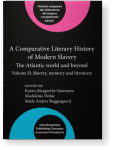Chapter 13
Cinematic slavery
A genealogy of film from 1903 to 2020
This chapter is a transnational genealogy of how dramatic, fictional movies and television shows
from 1903 to 2020 have represented transatlantic slavery. It highlights lesser-known movies by comparing hegemonic
Hollywood productions to marginalized and counter-hegemonic film industries. This history of representation is
organized into seven heuristic categories: (1) plantation dramas before World War II alongside adaptations of Uncle
Tom’s Cabin, (2) African-American interventions in the 1920s and 30s, (3) Hollywood’s attempt at integration in
response to the Civil Rights movement, (4) international Marxist cinema from Cuba and Brazil to Italy and France, (5)
Pan-African cinema made during the 1970s to 1990s, (6) neoliberal and evangelical movies since the 1990s, and (7) new
movies by an emergent generation of multiethnic filmmakers.
Article outline
- Early plantation dramas
- Screening integration
- From Marxist cinema and cinema Novo to Pan-African cinema
- From neoliberal evangelism to transnational black film and television
- Conclusion
- Author queries
-
References
This content is being prepared for publication; it may be subject to changes.
